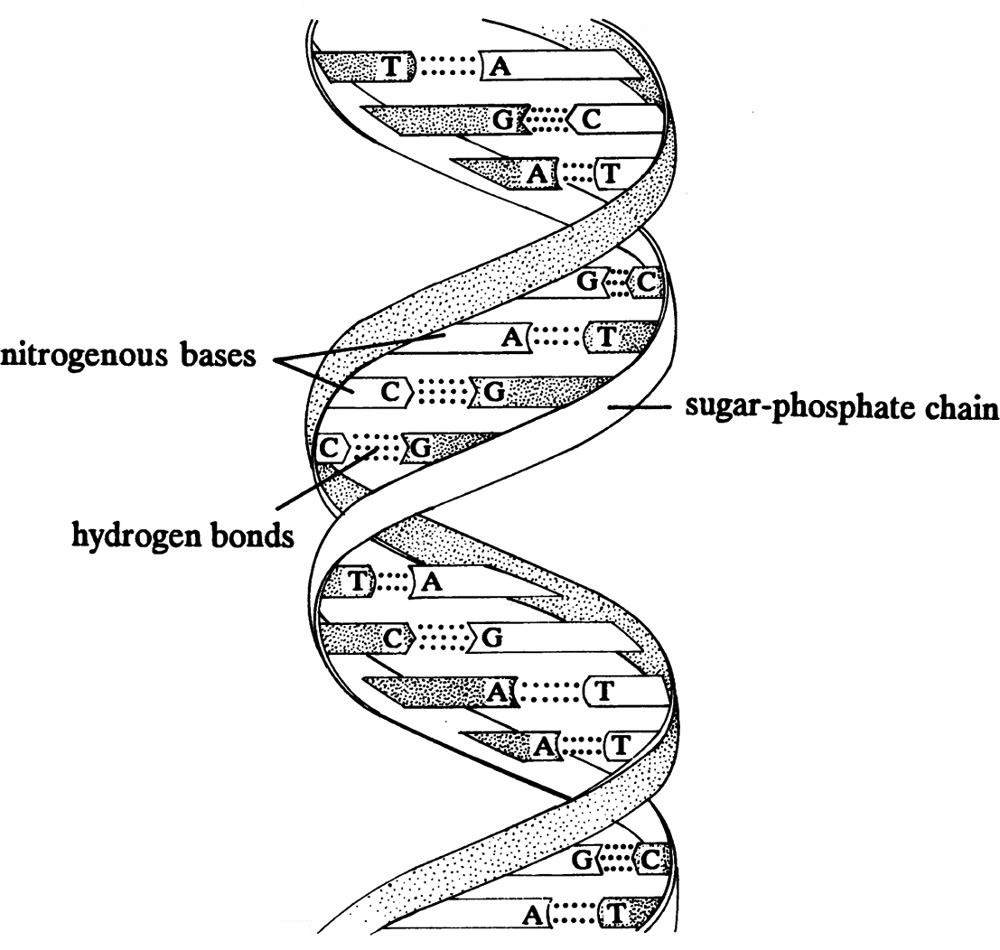Genetics
Genetics is the study of heredity, the process by which characteristics are passed from parents to offspring. The basic laws of genetics have been understood since the late eighteenth century, when they were first discovered by Gregor Mendel. What Mendel discovered was that in sexual reproduction, individual heredity traits separate in the reproductive cells, so that reproductive cells, known as gametes, have half as many chromosomes (large strings of hereditary units) as normal cells. Normal body cells are called diploid, and gametes are called haploid. (Think DIploid = Double and HAploid = HAlf to help you remember it.)
In human reproduction, the female gamete (ovum) combines with the male gamete (sperm), each of which contains 23 unpaired chromosomes (haploid), to produce a zygote, which contains 23 pairs of chromosomes, or a total of 46 (diploid). Meiosis is the process by which gametes are created. Sexual reproduction by meiosis and fertilization results in a great deal of variation among offspring.
DNA (deoxyribonucleic acid) is the molecule that contains genetic information. It is “written” with the genetic code, a combination of nucleotides that bind together in a specific pattern that can be “read” by the cell to instruct it how to grow and behave. DNA is shaped in a double helix, which looks like a ladder that is twisted along its axis.
DNA Molecule

A gene is defined as the unit of inheritance contained within the DNA of an individual. A gene may come in several varieties, known as alleles. For example, in the gene that determines eye color, a person may have the allele for brown eyes or green eyes. Each of us has two alleles for every gene, one inherited from each parent. These alleles may or may not be alike. If the alleles are alike, that person is homozygous for that particular gene. If the alleles are different, the person is heterozygous for that particular gene. The sex of babies is determined by the genes contained on the sex chromosome. In females, the two sex chromosomes are alike and are designated as XX. In males, the sex chromosomes are heterozygous and designated as XY.
Genetic traits are inherited independently of one another, and when different traits are paired up during the fertilization of an egg, often one trait is dominant and the other is recessive. A recessive trait is only expressed if the offspring has two copies of that trait. A dominant trait, on the other hand, will be expressed even if only one copy (paired with a recessive trait) is present. For example, Huntington’s disease, which causes degeneration of nerve cells and loss of muscle control, is passed from parent to offspring as a dominant trait, so only one copy is necessary for the offspring to inherit the disorder. On the other hand, cystic fibrosis, which affects the lungs, is caused by a recessive trait which must be inherited from both parents in order to cause the disease. Other disorders, such as some types of cancer, Down syndrome, and color blindness, are also caused by genetic traits.
A person’s genotype is her genetic makeup, including both dominant and recessive alleles. A person’s phenotype is simply how her genes express themselves in physical characteristics. Take eye color, for example. If a woman has brown eyes, then brown eyes are part of her phenotype.
Study the following example.
| Question | Analysis |
|---|---|
| Suppose that black fur in rabbits is a dominant trait and that white fur in rabbits is a recessive trait. A black rabbit and a white rabbit mate and produce a white kit (that is, baby rabbit). Which of the following inferences is supported by this information? |
Step 1: You’re being asked for a deduction based on a set of facts. Two rabbits—one black and one white—have a white kit. Step 2: If white is a recessive trait, the white kit must have inherited a white-fur allele from each of its parents. The white rabbit parent must have two white-fur alleles, and one of those alleles was passed on to the kit. The black rabbit parent must have a black-fur allele and a white-fur allele, if it passed a white-fur allele along to the kit. Step 3: One of those insights will show up in the answer choices. |
| (A) The parents’ next kit will be black. (B) The white rabbit has a recessive black-fur allele. (C) The black rabbit has a recessive white-fur allele. (D) The kit is an albino. |
Step 4: Choice (C) matches one of the deductions made earlier and is correct. You do not have enough information to infer anything about other kits the parents might have, so choice (A) is wrong. Choice (B) contradicts the information in the question stem: you’re told that black is dominant. There is no support for the claim (D) that the kit displays albinism. |